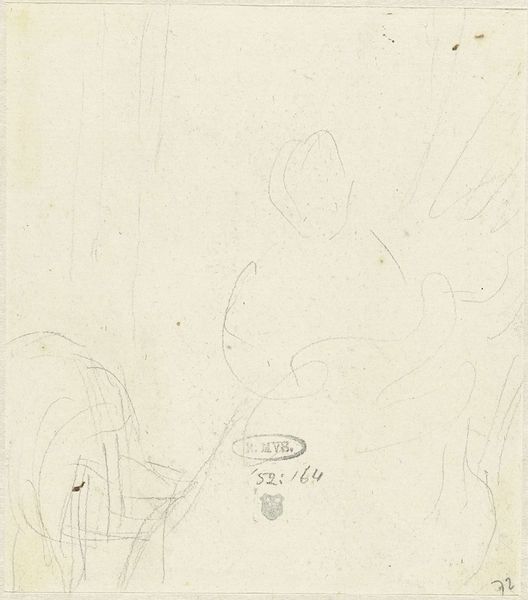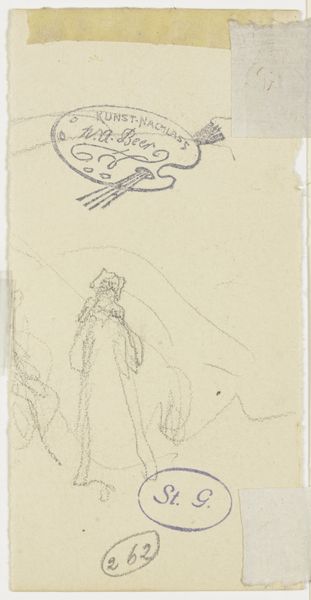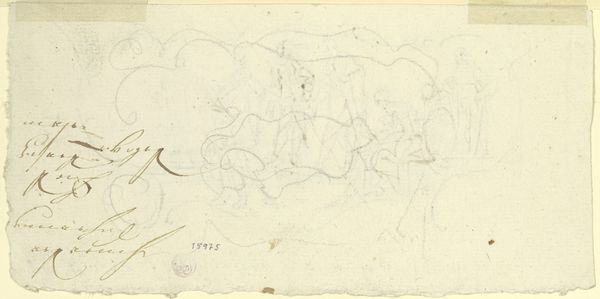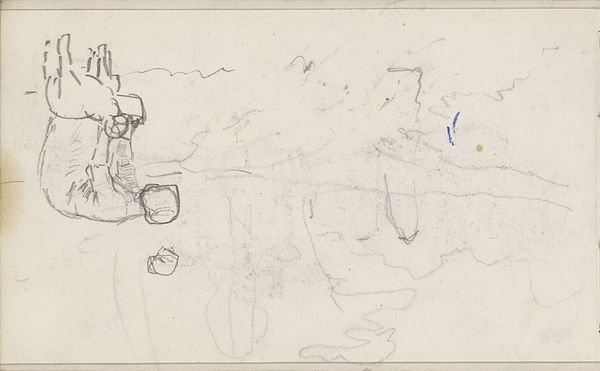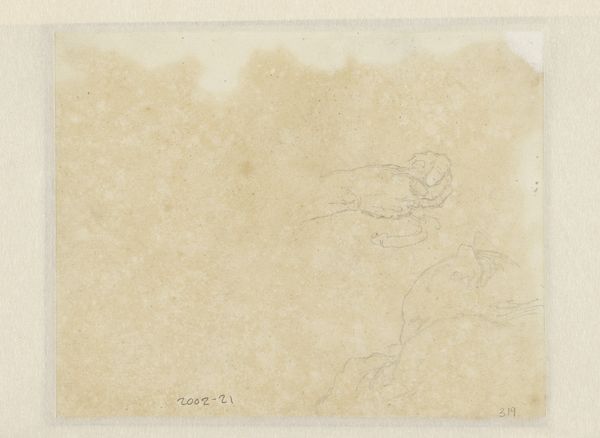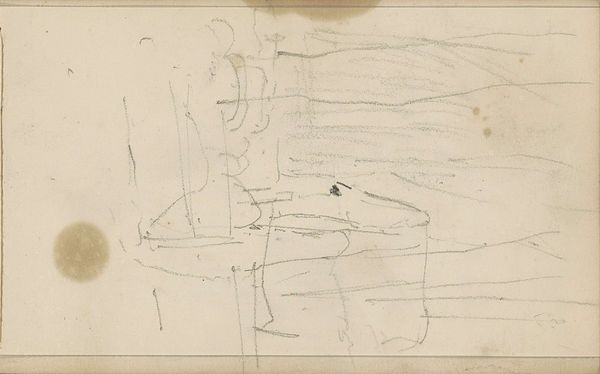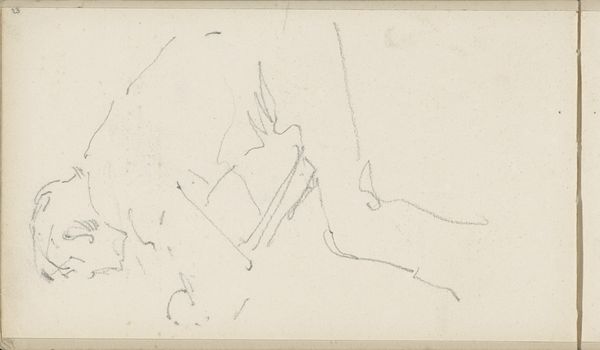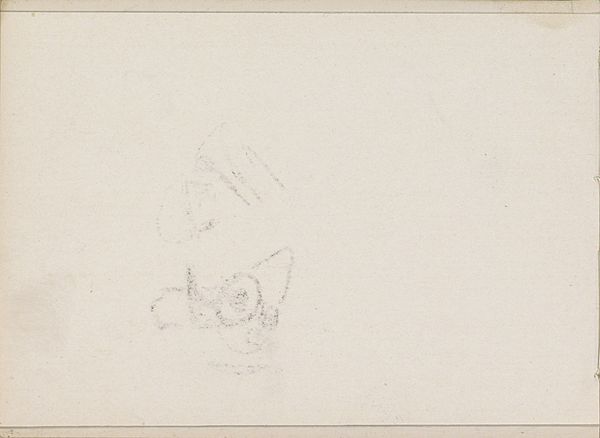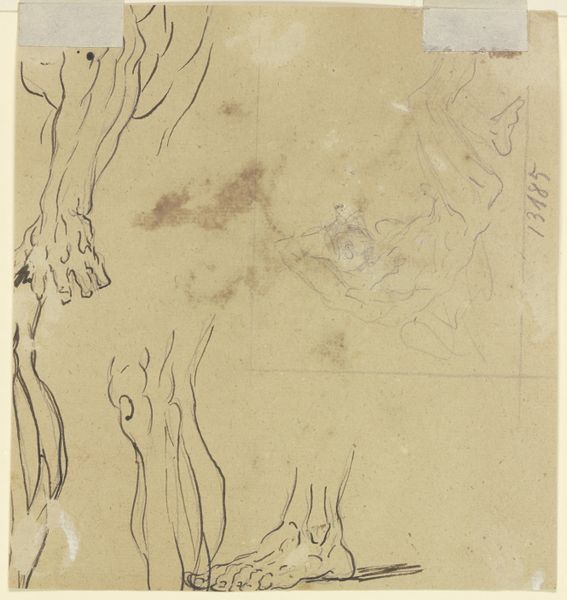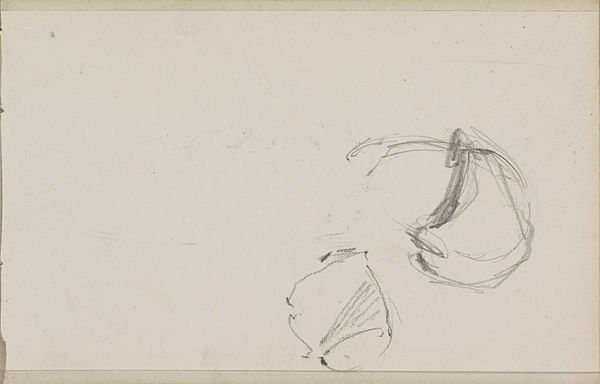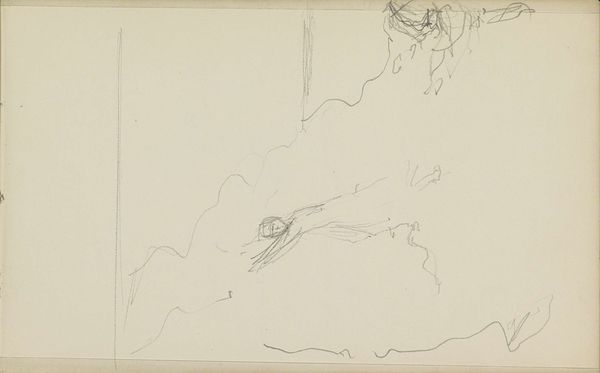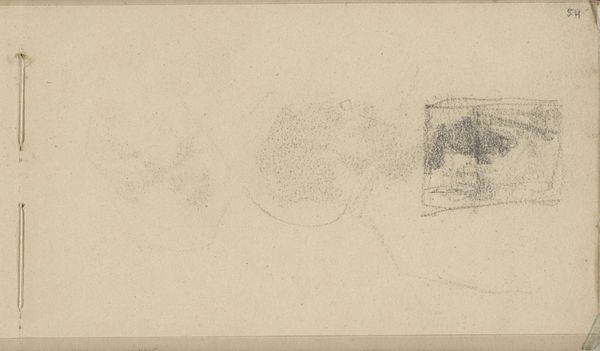
drawing, pencil, graphite
#
drawing
#
16_19th-century
#
landscape
#
figuration
#
german
#
pencil
#
graphite
Copyright: Public Domain
Editor: Here we have an unidentified depiction rendered in graphite and pencil on paper by Eugen Klimsch. It’s currently held at the Städel Museum. The strokes feel very raw and spontaneous, almost like the artist was trying to capture a fleeting impression. How do you interpret this work, focusing on its intrinsic elements? Curator: Well, immediately, the dominance of line is evident. Note how Klimsch utilizes line weight and density to create depth. Observe, for instance, the build-up of graphite in the upper right quadrant versus the more sparse application elsewhere. The absence of shading contributes to the drawing's overall flatness. What structural relationships do you see emerging? Editor: I notice how the vertical strokes on the left, counterposed against the scribbled area, establish a clear visual tension. The encircled inscription in the bottom left corner – its disruptive nature – is something I can’t resolve within my understanding of composition theory. Curator: Indeed, that inscription is a perplexing addition. Its geometrical form challenges the organic fluidity of the depicted scene. Ask yourself how that detail affects the unity, the overall harmony of the image. What effect is created by that disjunction? Editor: It’s almost as if he's layering different levels of representation, a purely functional sign placed into an imaginative context. I feel like the rawness actually does create more emotion, since you fill in what's missing with your own memories of similar natural locations. Curator: Precisely. The open composition invites subjective readings. Notice how line becomes a field where representation merges with abstract form, how its formal strategies dictate what is possible to be expressed here. The visible texture of the paper further emphasizes its status as an object of contemplation, something incomplete in itself, and fully dependent upon its reception. Editor: Thank you for pointing those out. I will consider all these factors during my next visit to the museum. Curator: A thorough analysis. This way we can look for underlying meanings and emotional impact conveyed by simple and, at first glance, unstructured lines.
Comments
No comments
Be the first to comment and join the conversation on the ultimate creative platform.
